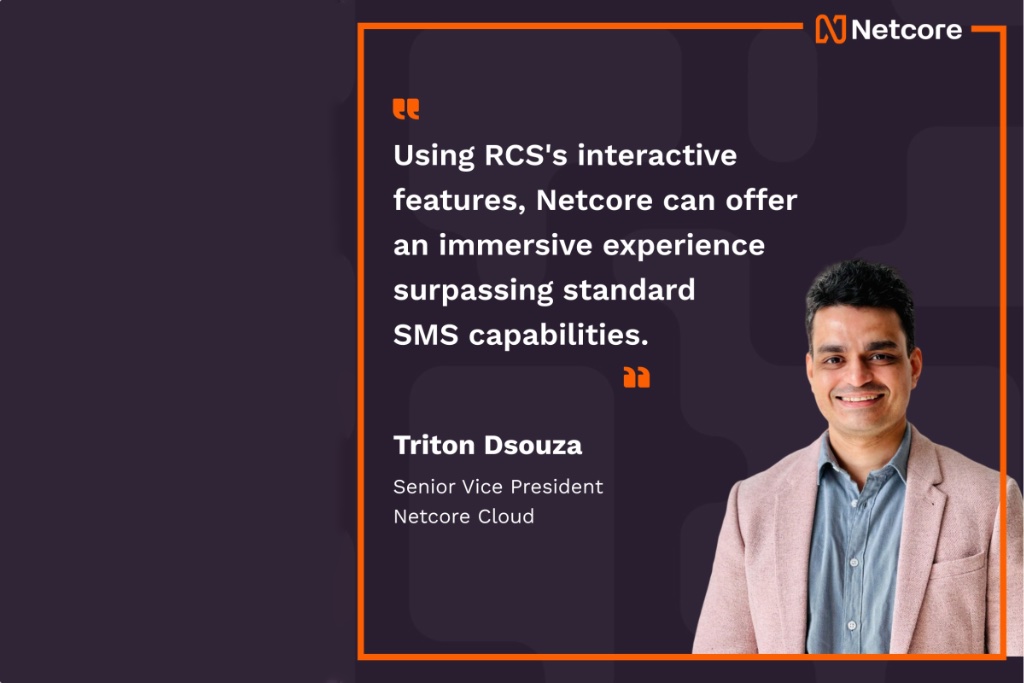By Triton Dsouza, Senior Vice President, Netcore Cloud
The inception of the first SMS in the winter of 1992, a cheerful “Merry Christmas” to Richard Jarvis of Vodafone, marked a historic milestone in the evolution of communication. SMS has come a long way since then, having emerged as a crucial tool for brands to interact with their customers and nurture engagement.
Despite the proliferation of multiple channels available to brands, SMS has emerged as one of the most dependable channels to maximize reach and engage customers. The pivotal role of SMS marketing has witnessed remarkable growth over the years, with Asia-Pacific holding more than 30% of the market share due to its vast population.
As we witness the meteoric rise of SMS marketing, it is evident that brands are adopting this channel en masse to capture the attention of their audience. However, in doing so, they risk contributing to an alarming trend of attention fatigue among consumers, who are increasingly bombarded with upwards of 20,000 brand exposures per day.
Coupled with the disconcerting trend of shrinking human attention spans, it is clear that capturing and retaining customer attention has become an arduous and complex endeavor.
It’s thus crucial for brands to devise strategies to engage with consumers to stay relevant.
Current messaging channel comes with limitations
In today’s fast-paced world, it’s not uncommon to receive an overwhelming amount of promotional, transactional, discount, and job-post messages on a daily basis. However, it’s important to note that the majority of these messages are often ignored, left unopened, or even deleted without any further action.
Furthermore, the current messaging channel landscape poses significant challenges for businesses looking to connect with their customers in a meaningful way. The current messaging channel,
- Comes with a character limit of 160 characters. Stuffing words in a limited space makes messages unattractive.
- Is purely a one-way conversation. Current messages being sent don’t have the technology or capabilities to receive a response, and neither can consumers respond freely to these messages. Responses are limited to only Yes or No messages.
- No interactive CTAs. The only CTA is the link provided in the message that takes users to the desired page.
- Lacks link previews or visibility. Link previews give us a peek into what to expect without the need to leave. SMS currently allows only links that redirect to the desired page.
Unleashing the power of messaging with RCS
Rich Communication Services or RCS, currently available to Android users, is a richer way of messaging. Features like sharing high-resolution photos, group chatting, reading receipts, and a lot more are now possible with RCS, which were previously unavailable through traditional messaging channels.
Fifty-five carrier networks around the world currently support RCS. By leveraging the interactive features of RCS, we can provide a rich, immersive experience that goes far beyond what is possible with standard SMS channels. From personalized messaging to interactive features like carousels & buttons, RCS opens up a new world of use cases that we can explore to enhance the customer experience.
Rich Communication Services (RCS) presents marketers with an unparalleled opportunity to offer customers a superior experience replete with numerous options and increased security via native messages. Today, successful brands in India like BankBazaar, Subway, EaseMyTrip, etc., are effectively utilizing RCS to capture and hold customer attention and stand out in the crowded landscape of traditional messages.
With a good success rate in India, this holds immense potential for South East Asian countries which has a large mobile device penetration. With the help of verified profiles adorned with branded sender ID names and logos, brands can establish trust and credibility with consumers, resulting in heightened engagement and an elevated user experience through the medium of a rich media interface.
The integration of Conversational Marketing with RCS messaging has led to more personalized and engaging interactions with customers. Unlike traditional one-way messaging, this enables two-way conversations with interactive chatbots, enhancing customer lifetime value and boosting retention.
Moreover, with performance tracking features like read receipts, action tracking, and deep conversational analytics, brands can monitor and enhance their engagement strategies, setting themselves apart from competitors.
The Road Ahead with RCS
In the realm of messaging, SMS continues to retain its prominence, despite the surge in OTT messaging applications. Despite a marginal dip in usage over the past few years, SMS still holds its ground as a preferred medium for information sharing, advertising, and messaging.
It is noteworthy that while an average app loses a staggering 77% of its users in the first three days and 95% within the first 90 days, SMS retains a remarkable 90% of its users even after 90 days. This points towards the tremendous potential of RCS as an indispensable communication tool.
The outlook for RCS messages is auspicious, as backed by empirical evidence, which predicts that the RCS market will register a Compound Annual Growth Rate (CAGR) of 12.5% from 2021 to 2026. In South-East Asia alone, the RCS subscriber base is looking to hit 3.8 million, equivalent to 40% of global mobile users.
As an Application-to-Person (A2P) communication platform, RCS continues to be an essential mode of communication, which has only become more pertinent in light of the pandemic.
As the market is continually evolving, brands that remain static and fail to adapt to the changing landscape risk being left behind in this fiercely competitive environment.
MARKETING Magazine is not responsible for the content of external sites.











